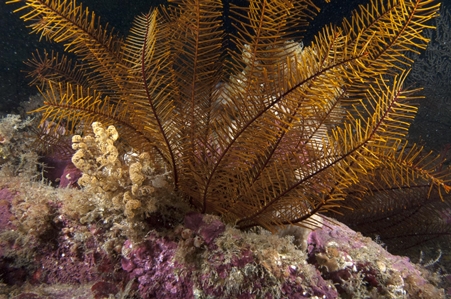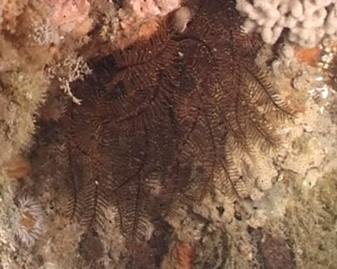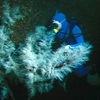Other Names
- Crinoid
General Description
Adults with between 10 and 25 arms. Colour orange, brown or yellow, but occasionally purple or white or with bright green tips to the arms. The anal cone is centrally placed on the disc and the mouth lies to one side. The oral pinnules are relatively long and have paired teeth on segments near the tip. Arm up to 23 cm long.
Biology
This is the most conspicuous species of crinoids in southern Australia. The body is usually kept hidden in a rock crevice, with only the long arms reaching out into the water to feed.
Habitat
Rocky subtidal reefs, usually in areas with strong wave action or currents, in depths of 0-70 m.
Reefs
Coastal shores
Distribution guide
Southern Australia.
Species Group
Seastars and allies › Feather stars
Depth
Shore (0-1 m)
Shallow (1-30 m)
Deep ( > 30 m)
Water Column
Max Size
23 cm
Diet
Plankton or Particles
Commercial Species
No
Global Dispersal
Native to Australia
Species Code
MoV 1866
Identify
Conservation Status
- DSE Advisory List : Not listed
- EPBC Act 1999 : Not listed
- IUCN Red List : Not listed






